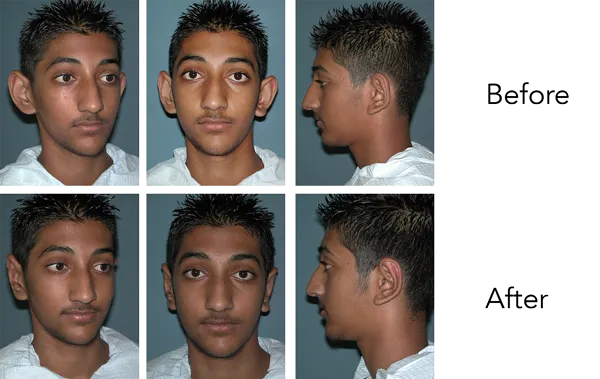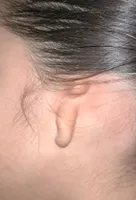Otoplasty

Otoplasty (Ear Pinning)
Protruding ears, which prominently stick out from the head, are considered to be less-than-attractive in our society. Children with this deformity can become the object of peer group ridicule. This can result in loss of self-esteem. This can be prevented by a corrective ear surgery known as otoplasty. Surgical correction of protruding ears is a safe and highly successful procedure. It can be performed after the child has reached the age of six, since by this time the child’s ear is almost fully grown.
The Procedure
When the otoplasty is properly performed there should be no sharp telltale lines in the cartilage folds of the ears and the ears should look quite normal in appearance. Achieving this kind of positive result involves accentuating the inner fold of the ear (antihelix), and rotating the ear backwards using special sutures between the inner cup (concha) and the underlying deeper tissues (fascia). The operation is performed through incisions behind the ear. The ear is then molded with an absorbent material incorporated into a head dressing. This must stay in place for the first week to protect then ear and hold its shape. The new ear shape will be secure by the time the dressing is removed.
Timing of Otoplasty
Like microtia ear reconstructions, the otoplasty can be performed as early as six years of age. At this age the ear is approximately 85% of its adult size. This is also the time when children become aware of their prominent ears and teasing can become a concern at school. Six year olds are also able to help care for their ears after the operation. Parents can save their children from unwarranted ridicule and psychological trauma if they fix their child’s protruding ears while they are young. Patients who have corrective ear surgery later in life also find satisfaction, but the psychological trauma from childhood can be avoided.
Patient Photo Gallery



What Is Microtia?
The outer ear is made up of cartilage, a connective tissue that develops in the womb, and in some cases, the growth of this tissue fails to progress properly. Microtia is considered a rare condition; however, the exact incidence and prevalence of microtia worldwide is unknown. It's estimated that 1 in 5,000 people is born with this condition.

The Procedure:
Rib Cartilage Framework
For Microtia Reconstruction

The result you can achieve through ear reconstruction depends on your surgeon’s artistic ability to sculpt the new ear from cartilage. The process begins with careful planning using measurements, patterns, molds, and plaster casts made from the ear on the opposite side.
Stage I
During the first surgery, the patient’s own rib cartilage is carefully carved to make a framework that is implanted beneath the skin.

Stage II
Usually the earlobe is rotated into the proper position during the second stage of the reconstruction process.

Stage III
During the third stage, the ear is elevated and a skin graft is placed behind the cartilage to create a space behind the ear.

Stage IV
The forth stage typically includes refining the central cup of the ear (concha) and the protective door over the ear canal (tragus). A multiple stage approach is used to provide anatomic results.

Contact
Grant A. Fairbanks

Disclaimer: This website is to be used for general information only and is not intended to provide medical advice. This site is not a substitute for consultations with Dr. Fairbanks.
Copyright 2024 Grant A. Fairbanks MD - Art of Plastic Surgery All Rights Reserved
